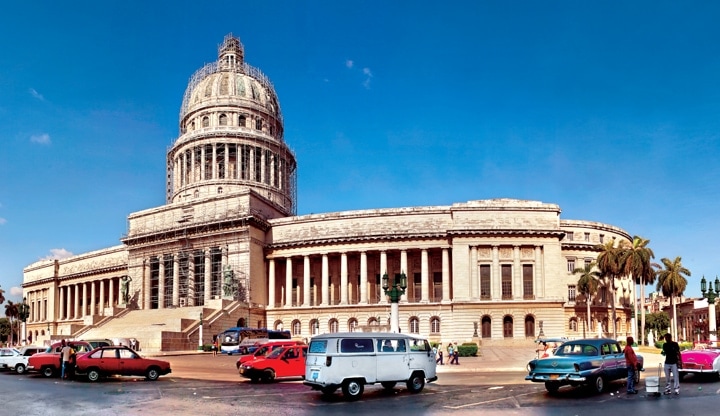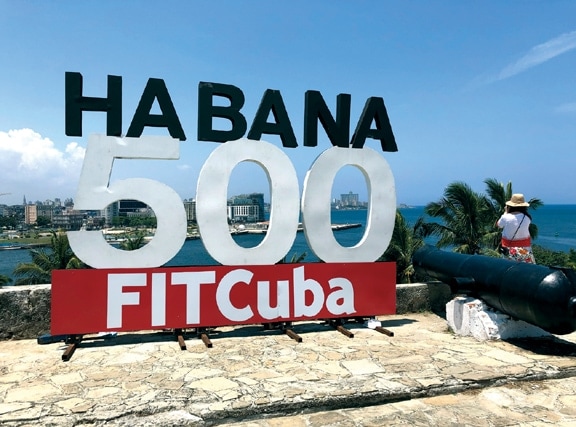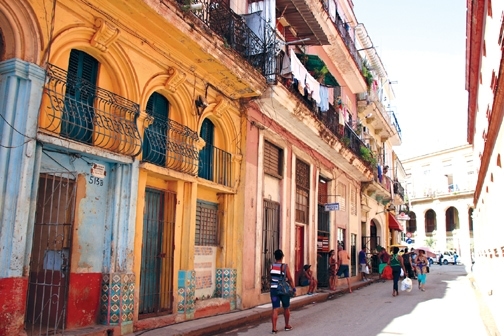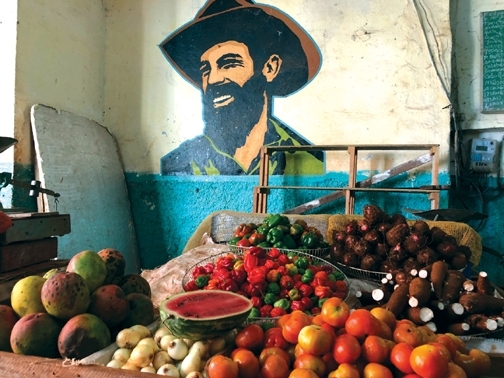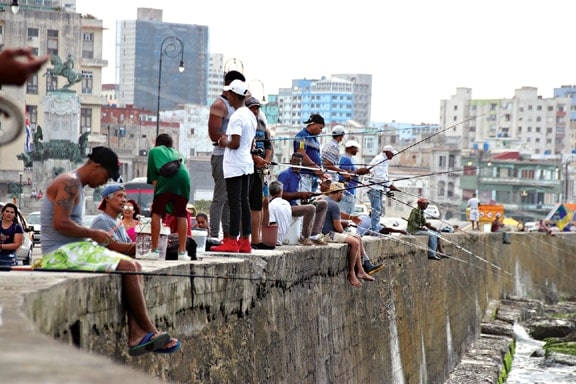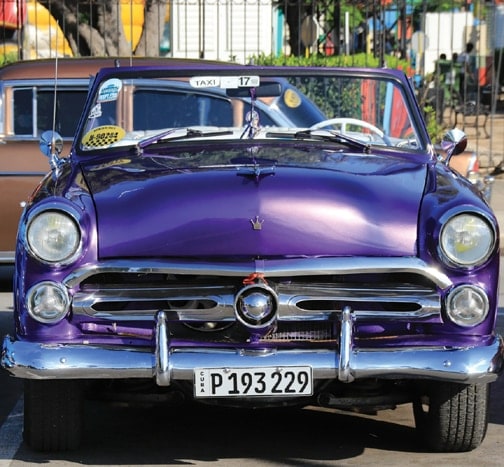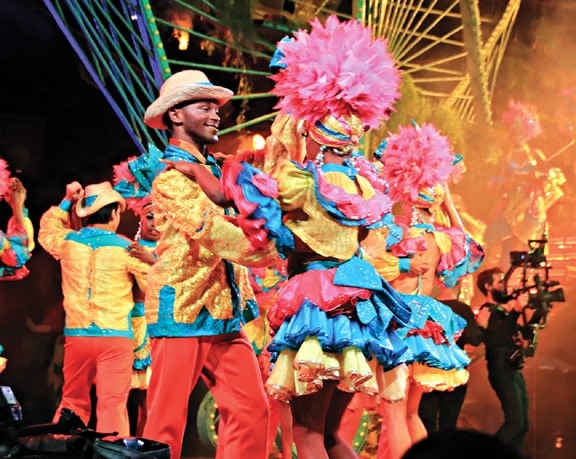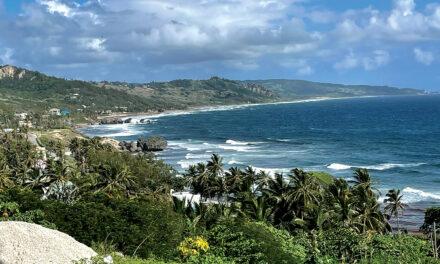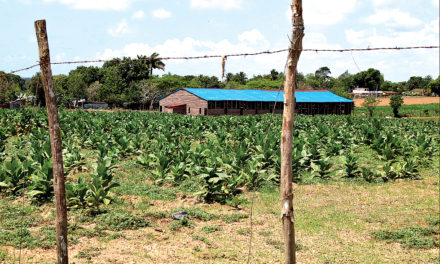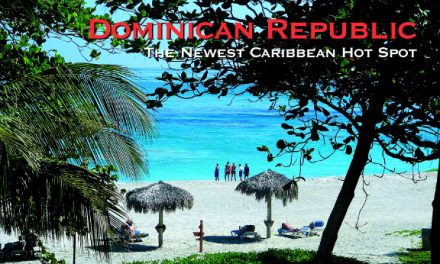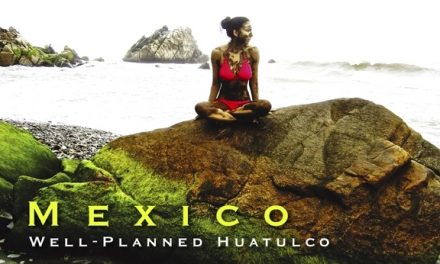Cuba
Celebrating Havana’s 500th!
Article and photography by Steve Gillick
It’s been 500 years since the city, originally known as San Cristobal de La Habana, was founded by the Spanish on November 16, 1519. On a recent visit, equipped with a camera, a pair of good walking shoes, a very minimal knowledge of Spanish and lots of energy, I set out to get lost on the main streets, back streets, Plazas and markets that make the historic core of this photogenic city so intriguing, mesmerizing, captivating and fun. The goal was to reacquaint myself with Havana after an absence of five years, as well as see for myself how the city was preparing for the big birthday bash.
No matter how hard you try, it’s pretty hard to get lost in Havana. The Atlantic Ocean forms the northern border of the city, and the Malecón, the ocean-side esplanade, roadway and seawall, stretches along the coast for 8 km (5 miles) from the mouth of Havana harbour to the western district of Vedado. Even when I got turned around on tiny side streets I would ask directions in English and a smiling response in Spanish would follow, often with the person walking, chatting and laughing with me for a block or two to set me back on the right course.
But I also came to the realization that trying to get lost in Havana can actually become pleasantly addictive. I discovered vibrant fruit and vegetable markets sporting colorful paintings on the walls of Cuban heroes such as Camilo Cienfuegos and Che Guevara. I walked by two rough-looking butchers, gruffly cutting and sorting meat in an open air stall. I hesitated before asking if it was alright to take a photo but they stopped, smiled and told me to go ahead. I wandered into small art galleries and chatted with the owners about the local artists they were showcasing. I passed by street parking lots filled with shiny classic cars from the 1940’s and 1950’s, and I roamed through residential streets adorned with imaginative street art.
And just about everywhere there were signs indicating that the restoration of a nearby building was part of a city renaissance, initiated by the occasion of Havana’s 500th birthday. In fact, at FITCuba, the annual tourism conference that took place in Havana this year, Manuel Marrero Cruz, the Minister of Tourism enthusiastically declared that, “The 500th Anniversary of Havana is no longer November 16. It’s every day of 2019”, and we learned that some 4500 projects fall under the umbrella of the big birthday celebration.
The person responsible, not only for re-invigorating the city and tourism but also for re-energizing the inhabitants, the Habaneros, is Eusebio Leal, the City Historian and visionary. He was quoted as saying, “It’s important for people to not just see Cuba as a country of beaches and palm trees. Behind the beautiful image of a tropical paradise, there is a rich cultural history, which should be portrayed to visitors”. But Leal didn’t want to create sterile city blocks of restored buildings. His goal was to create a robust relationship between the goal of preserving culture and history, and the daily lives of residents who work, shop, play, and raise their families in the city. Leal noted the pride that Habaneros were feeling toward the restoration; “Almost like magic, there has been a rebirth of historic Havana together with activities for children, youth and adults”.
On the Malecón, new modern structures have been built alongside buildings, some over 100 years old that have been ravaged by humans, time and weather. And as part of the 500th Anniversary, visitors can interact with fascinating works of art, originally installed for the 13th Havana Biennial Art Exhibition. Now the Malecón experience includes crashing waves, memorable sunsets and rows of fishermen standing on the seawall as well as Roberto Fabelo’s sculpture of the ‘Turtle Man’, called “Put a Good Face on it”, Xavier Mascaro’s series of powerful iron figures, called “Guardians”, Rafael Miranda San Juan’s delicate “Iron Statue of a Woman’s Head and Shoulders”, along with many more paintings, sculptures, sketches and exhibits that instill a sense of wonder and enhance the appreciation of Havana’s history, culture, creativity and beauty.
Leaving the Malecón, Paseo del Prado passes right through art exhibits and alongside street murals. This tree-lined promenade is in the middle of a boulevard with stunning buildings from the early 20th century on either side with some notable modern exceptions. The Hotel Biscuit, built in 1911 no longer exists, but in its place is the new 5 star Iberostar Packard Hotel with a very classy retro-themed façade and interior.
The promenade continues to Central Park, home to the historic Hotel Inglaterra, which is next to the lavish, neo-Baroque architecture of the Gran Teatro de la Habana, which in turn sits beside El Capitolio, the Cuban legislative building. Across the street is the new 5 star Manzana Kempinski Hotel, one of the 500th Anniversary projects, occupying a fully restored building from 1917. And next door is Iberostar’s 5 star Parque Central Hotel with the Rooftop pool and bar also serving as possibly the best vantage point in the city to take in the history and beauty of the Central Park area.
The dome of El Capitolio resembles the U.S. Capital in Washington D.C. but that’s where the similarities end. The two bronze doors of the building relate the history of Cuba and under the dome is the impressive Statue of the Republic, sculpted by Angelo Zanelli. It appears as a young woman dressed in a tunic with a helmet, shield and lance, ready to defend the people’s right to establish their own government. It’s the 3rd largest bronze statue in the world at 17 meters (56 feet) high and weighing 49 tons. The plan is to unveil the restored statue for the 500th Anniversary.
Walking around Havana is a safe experience. Certainly when Renaldo Garcia Zapata, the President of the Government of Havana spoke at the tourism conference, he began by talking about safety in light of the festivities planned throughout the city in the months ahead. Zapata also emphasized the charm of the city’s green parks and the five historic Plazas. He noted that Plaza Vieja, with its eclectic mix of buildings and architecture from centuries past, was actually the Number One visitor attraction in all of Cuba.
On our last evening, we went to see the show at the famous Tropicana Club. For fans of the “I Love Lucy” television show, this is Ricky Ricardo’s club, gone wild. The dancing, music and extravagant costumes are amazing and seemingly emphasize that you’re in a very special destination like no other.
When I asked a millennial-aged store keeper what Havana’s birthday meant to him, he said “we want to show that we’re an active part of this world and that the world is welcome to come and celebrate with us”.
Havana’s 500th birthday has been a catalyst in reinvigorating the city and re-energizing the spirit of its residents, and of tourism in general. This birthday is not the end of an era, but the beginning of making this already amazing city – and country- even more of a must-see destination.
www.gocuba.ca

